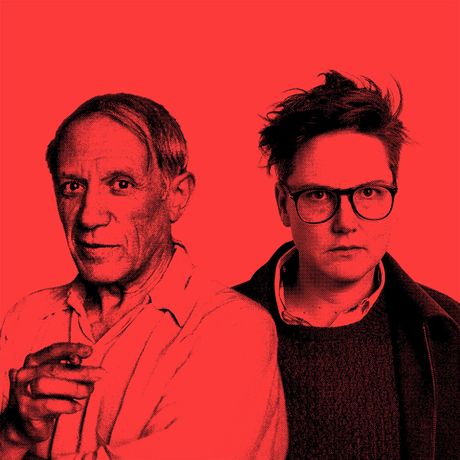
Our Picasso exhibition, This is pblmatic: Picasso according to Hannah Gadsbywhich opens to the public today, was always going to be controversial.
We are one of 50 museums around the world invited to organize an exhibition marking the 50th anniversary of the death of Pablo Picasso. The goal? Explore what he and his art mean to audiences today. As we discussed how our institution could mark this milestone, one thing was always clear: our show needed to spark dialogue and expand the canon, two core parts of our mission.
Since the Brooklyn Museum is the only art museum in the United States with a feminist center, we have not forgotten that Picasso’s death in 1973 coincided with the revolutionary emergence of the second wave of feminism. and the entry of women into every corner. of the artistic world.
In the half century since Picasso’s death, feminist artists, curators and art historians have rewritten the canon. They challenged dominant male narratives of modernism, the designation of “genius”, the impact of personal behavior, and the meaning and current reception of complex historical figures such as Picasso.
That’s why we knew now was the time to explore Picasso’s legacy through a feminist lens and include the voices of some of the most important female artists to emerge in the years since his death. of Picasso. This is also why the exhibition delves into Picasso’s approach to women, a well-documented but still provocative subject. And that’s why we’ve invited Australian comedian Hannah Gadsby to co-curate the exhibition with our Senior Curator of Feminist Art, Catherine Morris, and our Senior Curator of European Art, Lisa Small.
We caught up with Gadsby, who was an avid college art history student, shortly after their award-winning comedy show launched. Nanette. In this performance, Gadsby holds the art world accountable for its role in suppressing non-majority perspectives. They don’t let museums off the hook for frequently condoning and perpetuating the misogyny inherent in art history. Gadsby’s enthusiasm for exposing Picasso’s problematic behavior and for challenging the cultural climate and cultural institutions that minimize – or even idealize – such behavior, made him the obvious choice to help us create a show to address the complexities and tensions that Picasso arouses.
Gadsby is not the first to criticize Picasso. Countless articles, books, films and exhibits have been produced which, among other things, consider his treatment of women in art and life (not to mention his treatment of other cultures), but Gadsby approaches this delicate subject with a completely new way. : comedy.
Gadsby’s is not a light comedy. It’s a comedy that delves into difficult themes and pushes us to tackle cultural tensions around societal injustice. It’s a comedy that shows us why exercising our right to free speech is integral to challenging the status quo. It’s a comedy that highlights the stories of those who have been marginalized for too long.
Benefits, not threats
To those wondering if Gadsby’s voice has a place in this exhibit, I would simply ask: what interests are threatened by including it? Or, who benefits from excluding it?
We live in a time of conflict. The left is attacked for having been “awakened”. The right is stepping up its efforts to ban books. A US state now bans classroom teaching about sexual orientation or gender identity. Others prevent teachers from talking about our country’s history of racism and the resulting systemic oppression. A school principal was ousted because an art teacher showed students a picture of Michelangelo David. Voices across the political spectrum are “cancelling” anyone they disagree with.
It’s pathetic it is not a question of canceling Picasso. Rather the opposite. To cancel means to refuse to commit. Refuse to have the conversation. Refuse complexity. Our exhibition is an invitation to complexity. And I’m sure Picasso can handle a bit of complexity. In fact, he invited her.
I am also convinced that our audiences can also handle complexity.
At the Brooklyn Museum, we have made engaging in difficult dialogues and advocating for free speech cornerstones of our work. (Remember the Sensations exhibition?) Now is not the time for museums to silence speech or restrict difficult narratives. Women have fought long and hard for the opportunity and the power to write their own stories. The Brooklyn Museum believes that the only way forward is to listen and make room for multiple points of view, particularly thoughtful and informed points of view that have not been considered.
As Gadsby says in Nanette“I believe we could paint a better world if we learned to see it from all angles, as many perspectives as possible. Because diversity is strength. Difference is a teacher. Fear difference and you only learn Nothing.
We have a lot to learn.
• Anne Pasternak is the director of the Brooklyn Museum, New York
